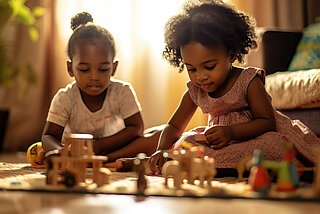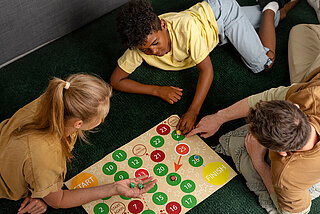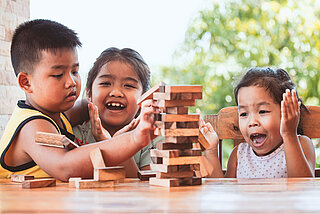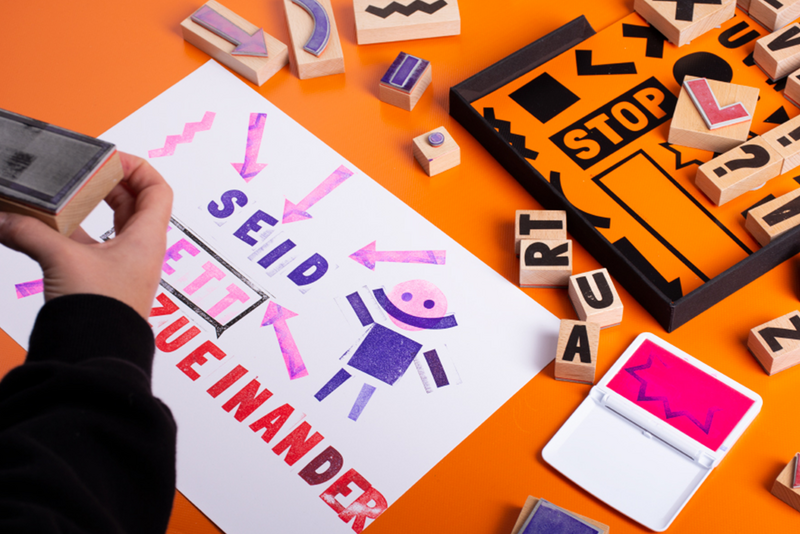
Unchanging play fundamentals
Playing between trends and tradition
By Steve Reece

The toy industry sees a huge number of new product introductions each and every year. Regular visitors to Spielwarenmesse encounter a large proportion of new products every time they come. Estimates vary, but something like 60-70 % of all Toy products are new each year. As such, our industry is very focused on novelty and ‘New’. We are constantly looking out for the next big thing, the latest trend we can jump on, the latest social media wave we can jump on to steal an advantage from our competitors.
However in reality, so much of the Toy business doesn’t fundamentally change much at all. In fact, we often focus too much on change, disruption and novelty at the expense of relying on basic unchanging fundamentals.
The core toy categories and play patterns
The core Toy categories have remained largely unchanged for decades, i.e. fashion dolls, action figures, vehicles, board games and so on. Every so often a new technology seems to herald the arrival of a new product category – some years back we had the advent of App Toys, a decade or so before that we had DVD Games and so on. The reality is that while technology has proliferated in recent years and taken a lot of available play time away from Toys, there is still a large and very healthy market in all the traditional product categories in our business.
The importance of perennial brands
Brands are really important in the Toy business. Parents know and trust brands, especially if they themselves played with the same brands or products as children themselves. For parents, interactions with their children are driven by both emotion and practicality. Therefore, parents often want to relive the fun of their nostalgic memories of their own childhood with their offspring. If you look at the top selling products across the past few decades you tend to see recurring brands – major industry icons like such as Barbie, Rubiks Cube, Monopoly, Lego and many more are commonly in the top selling charts year after year. Regardless of all the innovation we see, many brands have a perennial impact on the Toy industry.
Toys and games as social and developmental facilitators

Toys and games as social and developmental facilitators
Children tend to look at Toys as play items – a source of fun, and of course they are. However, from a parental perspective, Toys & Games tend to be seen as social and educational developmental aids. Board games help learn social skills like turn taking, as well as boosting literacy skills and cognitive development. Science kits are clearly educational in focus. In recent times, parents find themselves fighting a losing battle against excess screen time, and so Toys are increasingly used as a potential antidote or point of leverage to seek to lever the child off screens. The reality is that while current screen time consumption ranks higher than ever, video games are not new. Some form of video game has been available in many homes since the early 1980s. The point is that while there are some modern-day trends driven by the highly addictive handheld devices children have today, their parents’ generation also has plenty of temptation for screen time also.
Parents wanting the best for kids

Another connected point here is that the overwhelming majority of parents desperately want the very best for their children. One of the long-proven truisms of the Toy business is that we are recession resistant in the sense that normally, even in harder times, parents do not cut back from spending on their kids. Even through the global financial crisis when economies around the world suffered, the Toy business performed comparatively very well. In fact, the only major sales downturns through that period were associated primarily with indebted retailers who saw their credit facilities pulled and thus went out of business. Q4 2022 was very tough for Toy sales in many markets as high inflation and reduced disposable income pushed parents to focusing on more basic concerns such as food, shelter and heating. But the very fact that this was the first really terrible peak season trading in multiple countries this millennium so far supports the fact that underlying demand for Toys is timelessly strong.
Kids entertainment concepts

The final area where we can see timeless fundamental themes return year after year is in children entertainment. Let’s go right back to the original Star Wars movie, released back in 1977, the major theme is Good vs Bad supported by the theme of taking care of friends and family. That is such a timeless premise for a kids’ entertainment concept – one of the most successful movies of 2023 (with more than $1.3 billion takings at the global box office) has been The Super Mario Brothers movie, which features similar themes in terms of good vs bad and looking after friends and family.
Chase today’s trends but don’t forget the things which stay the same
In conclusion, as we look for the next new trends and opportunities which new technologies bring us, we should also remember to look at the unchanging play fundamentals which have underpinned the Toy business for so long.
About the author
Steve Reece has worked in the toy business since the late 1990s. He previously worked for Hasbro, managing iconic brands including Monopoly, Trivial Pursuit & Play-Doh across Europe. He has delivered $hundreds of millions in incremental sales for his employers, clients and partners over time. Steve appeared twice as an Expert Witness on toys & games for the UK Royal Courts of Justice and the courts of Hong Kong. He has extensive experience across toys & games including marketing, consumer insight, sales, licensing, sourcing and more. Today Steve runs Kids Brand Insight, a leading Consultancy helping toy & game companies profitably grow.




